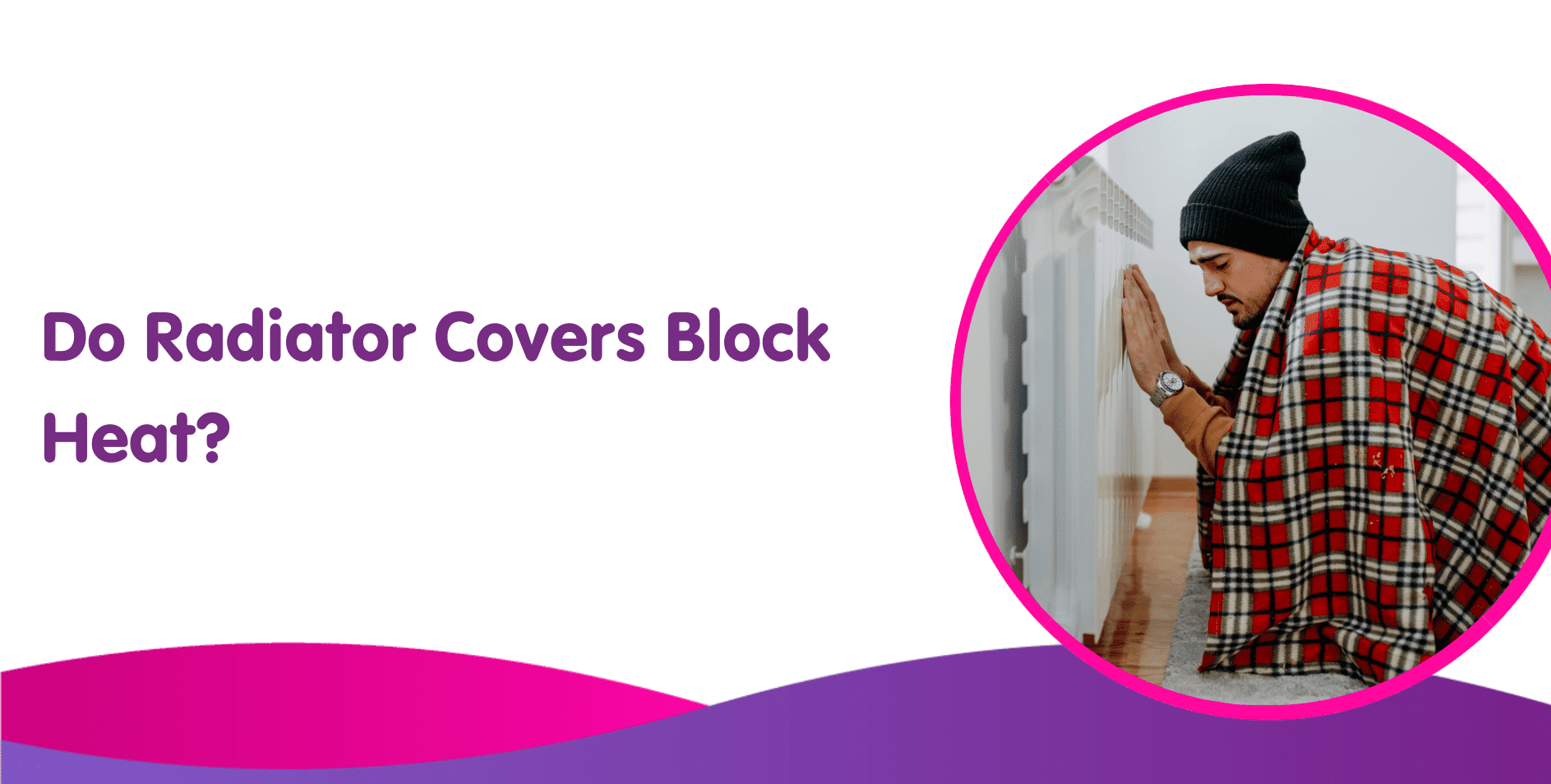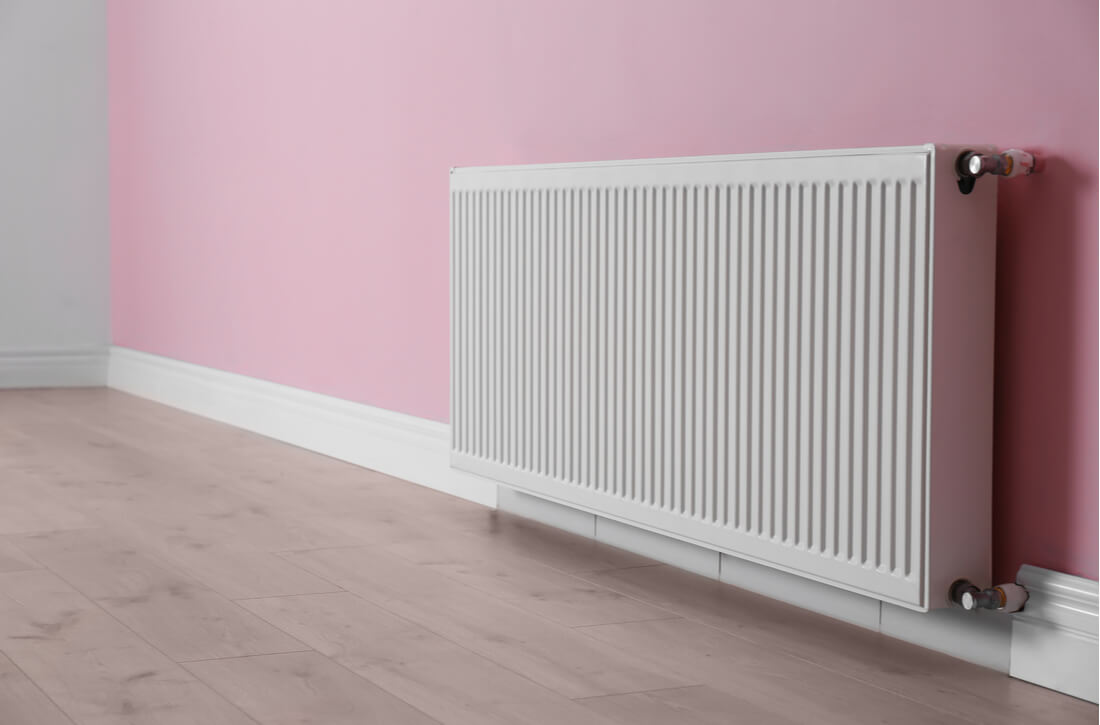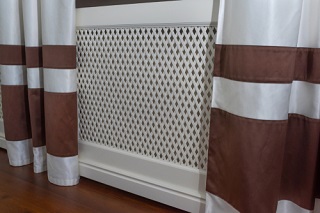Do Radiator Covers Block Heat?

Jump to:
Do Radiator Covers Block Heat & Should You Cover Them?
For most people, a radiator is just another boiler component in the room. There really isn’t much thought beyond that. For one, they aren’t exactly pieces of art; they are there to perform a function.
Most of us use a radiator cover to improve the aesthetic, among other reasons. But with that in mind, it is important to answer the question, do radiators cover block heat? Let’s explore the advantages and disadvantages of a covered radiator.
If you consider the fact that you may have just spent your hard-earned cash on the cost of an A-rated boiler to get maximum efficiency, then potentially diluting that is a major issue.
Get an online fixed price in 20 seconds:
Why You Should Use Radiator Covers
Regardless of where your décor taste lies, there isn’t any doubt that a home’s heating system is one of the least appealing features.
Aesthetically speaking, a radiator is simply a large piece of metal alongside a wall. If you want a warm room, it is something you have to put up with, which is why most people tend to put covers over their radiators.
If you don’t want a radiator cover you could check out some of the best radiators in terms of looks, efficiency & value.
Radiator covers improve the general aesthetics of a room. They can also offer valuable shelf space right above the radiator. Homeowners with young children also consider radiator covers as radiators can get quite hot and are a danger to children that come close to them.
The heat source can be dangerous to children and vulnerable people, particularly if the radiator is an older cast iron radiator.
With that in mind, radiator covers are an essential safety feature as they prevent dangerous accidents. You should also note that any heating system will sometimes trap air regardless of age or efficiency, resulting in noise emanating from the radiator, which is distressing to some.
Nevertheless, you can use radiator covers to reduce the noise. However, the most effective way to eliminate the noise is to bleed the radiators.
Did you know new boilers are over 90% energy efficient and can help ave you money on your bills?
Do Radiator Covers Block Heat?

Most people considering adding covers to their radiators are concerned about the covers reducing the efficacy of their heating system. They believe that radiator covers will inhibit the generated heat from moving around a room, so they steer clear of radiator covers. The truth is a lot more complicated than most people realise.
Radiators typically warm a room up through convection, which means that an air current goes around a room, pushed by the propensity of warm air to rise and cold air to sink due to gravity. This warm air flow is known as a convection current. When a radiator is covered, some of the heat generated is blocked, diminishing the convection current’s flow. If you have taken the time to balance radiators for efficiency, then a radiator cover is not a good idea.
You can say the same for radiant heat, which is the warmth created by the radiator. Some of that heat escapes through the way behind the radiator.
So, to answer the question, do radiator covers block heat, yes. The radiator cover blocks some of the heat the radiator creates, this can also have a negative effect if your radiator isn’t working properly, then you wouldn’t be able to spot if radiator was hot at the top and cold at the bottom.
What Are the Benefits Of Radiator Covers?
One of the reasons people tend to get radiator covers is for aesthetics, considering that not many people acknowledge a radiator as an attractive feature.
Apart from hiding unattractive radiators, radiator covers also provide additional storage space above the radiator. This article has also highlighted the safety benefit radiator covers provide. They add a layer between the radiator’s hot surface and young children that might be at risk of injury.
Read more about putting furniture in front of radiators here.
Getting a Radiator Cover
Choosing to get a radiator cover or not is simply down to your personal preferences. While it isn’t an essential feature of a home like a boiler, a radiator cover improves the look of a home. In certain instances, it can also offer an added level of safety.
Considering getting a gas boiler replacement in the UK but aren’t sure about how to go about it? Get instant quotes and comparisons in just minutes. With Compare Boiler Quotes, you don’t have to worry about tracking down the best boiler deals. You simply need to follow the prompt and get a new boiler.
Why not consider an infrared panel heater that comes in all sorts of designs but can be pretty much placed anywhere in a home, even the ceiling.
Radiator Covers and Efficiency
Those considering radiator covers will also wonder if having a radiator can affect the efficiency of their radiators. This might seem like a foregone conclusion considering that we just ascertained that radiator covers do block heat.
The space behind your radiator is wasted when considering the design of a central heating system. If your radiator cover comes with a reflector to help insulate the wall, then you inadvertently increase the radiator’s efficiency.
Many radiator covers have this feature as standard. Additionally, it is important to consider the standard shape of a radiator.
The space right above the radiator is also waster since air isn’t something that is physically occupied by those in the home. Some believe placing a radiator cover on your radiator will cause the heat to be deflected forward into the room instead of rising straight up.
However, should this happen, you should note that the shelf above the radiator will absolve a percentage of the heat.
Some experts suggest that certain radiator covers like wraps can help increase the radiator’ efficiency by offering a darker and closer fitting surface that helps to radiate the heat more effectively. This process can theoretically lower the effort required by your boiler to provide energy.
Another way to ensure efficiency is to make sure that you add thermostatic radiator valves to your radiators before you put the cover on.
Types of Radiator Covers

Surprisingly, many radiator covers are designed to appeal to a wide range of buyers. The most common radiator cover is made from MDF or medium-density fibreboard.
It typically comes in flat-pack form. Many DIY stores carry this type of cover. You can also get similar designs in wood, but note that these are a lot more costly and tend to block a significant amount of heat from a radiator. Despite this, an MDF or wood cover is quite popular because you can seamlessly paint it to match the room’s décor.
Some designs have a dramatic look, such as a crystal design that hides radiators behind glittery curtains. While this design isn’t right for everyone, it can help make a statement. Furthermore, you can also get radiator covers using galvanised steel.
The process of galvanising steel is all about chemically bonding zinc to steel or iron to eliminate the chances of it rusting. With this in mind, you can be sure that the radiator covers will last. Nevertheless, you should note that using a radiator cover made from metal isn’t the best solution for those that want ultimate protection from a hot radiator.
Since metal can conduct heat, these radiator covers can become quite hot, making metal radiator covers unsuitable for homes with small children.
Another type of radiator cover is the Radwraps, which are a type of cover that adheres to the radiator’s surface. These wraps come in an array of designs and are said to increase a radiator’s efficiency. It does this by improving the rate of heat directed around the room. There are also fabric covers you can place over the radiators as a sleeve would.
This type of cover can lower domestic heating costs by almost 35%. The truth is that not all covers are about practicality. Rather their design has more to do with style. You can get some radiator covers designed to transform the look of the radiators completely.
Are Radiator Covers Safe?
Getting radiator covers for your home means considering if they are safe. To safely cover your radiators, you need to ensure that you get the right size for them. If the radiator covers are too small, they can negatively affect the efficiency of the central heating. For this reason, you need your radiators to have gaps of 40mm width, 30mm height and 20mm height more than your radiator’s dimensions.
This is especially important if you intend to design and create your own covers. The key to prolonging your boiler’s lifespan is to have efficient radiators, which can also help lower your heating bill. Apart from correctly guessing the size of your radiator covers, getting a rear heat-reflecting panel can help lower heat lost through the external walls. It can also help increase the amount of heat in the room.
It is important that certain radiator covers, like those made from galvanised metal, can look quite stylish; however, they are also prone to getting quite hot when used for a long period. With this in mind, a metal radiator cover might not be the best choice for homes with vulnerable adults or young children.


